Born
in St Petersburg on 4 October 1913, Anatol Kagan was the son of a
university lecturer and a teacher. The elder Kagan was one of a
large group of intellectuals who, considered by the Soviet government
to be potentially dangerous to the new regime, were exiled aboard
the so-called "Philosophy Steamer" towards the end of 1923. The Kagan
family made a new life for themselves in Berlin, where Anatol's father,
who had also worked as a book publisher in Russia, re-established his
imprint. Anatol Kagan, whose talent for drawing had surfaced
as a child, soon became attracted to a career in architecture.
He initially enrolled in the diploma course at the Berlin
Technical University, hoping to transfer thence to the Bauhaus;
however, when the latter school was closed by the incoming National
Socialist government in 1933, Anatol Kagan was left to finish his
studies at the BTU, where he received a diploma in 1937.
Being a foreigner in Germany, Anatol Kagan was not
permitted to practice architecture there, so he decided to emigrate.
As he had been supplementing his income by teacher English
language classes, he chose Australia as his new home. Kagan
travelled via London, where he remained for six months while his
immigration paperwork was processed; during that period, he gained some
professional experience in the office of a minor architect of
theatres.
Anatol Kagan and his wife arrived in Melbourne in early 1939. His first job was with the conservative practice of Hugh & Arthur Peck, who were then engaged on a masterplan for Melbourne Grammar School. After a short period, Kagan transferred to the office of Seabrook & Fildes, who were more in tune with his modernist sensibilities. He was subsequently employed in a few other local offices before accepting a position with Australian Consolidated Industries (ACI) as their-in house architect, in which capacity he was responsible for designing a number of buildings at the factory site in Spotswood. Kagan commenced his own practice in 1941, working in conjunction with a fellow Russian emigre who, although lacking formal architectural qualifications, was skilled as a promoter and procurer of clients. The partnership existed for only a year or so before wartime restrictions stalled private architectural practice. Notwithstanding, the firm managed to complete several projects, of which two were published in local journals.
Anatol Kagan went on to work for the Department of Works & Housing, where he worked on the layout of military camps until the end of the Second World War, and subsequently on projects associated with post-war housing reconstruction, including involvement on development of the Beaufort House, an experimental prefabricated steel dwelling. During this time, and in collaboration with a fellow staff member in the department, Kagan undertook a few private residential commissions. Several of these were published, and, in 1949, Kagan chose to leave the Department of Works & Housing to re-establish his private practice. His new office, styled as Anatol Kagan & Associates, thrived during the 1950s. During that time, the bulk of the practice comprised luxurious modern houses for wealthy emigre business in the inner eastern suburbs; however, Kagan also designed some factories, apartment blocks and shop fitouts. One of his largest projects was for the new Mount Scopus War Memorial College in Burwood - the first modern purpose-built Jewish school in Australia. While this attracted considerable publicity in the architectural and daily press, a typographic error in one newspaper report resulted in the complex being attributed entirely to Dr Ernest Fooks, a fellow Jewish emigre architect who had been brought into the project as Kagan's silent associate. Sadly, this oversight has been perpetuated to the present day. One of Kagan's most remarkable projects during this period was his competition entry for the Sydney Opera House, which was prepared during a brief stay in that city in 1957.
By the late 1950s, Anatol Kagan had grown dissatisfied with his private practice in Melbourne; in 1960, he moved to Sydney to take up a position with the Public Works Department as a designer of high schools. He subsequently transferred to the division responsible for mental hospitals - a field of design that Kagan saw as a unique and rewarding architectural challenge. He remained there until the division closed in 1973. In retirement, Kagan kept himself busy as a Russian-language translator for his father's publishing house, and, until his eyesight began to fail in the early 2000s, continued to develop an ambitious scheme for the re-planning of his native St Petersburg, which, sadly, was never implemented. He lived long enough to see an exhibition of rejected entries in the Sydney Opera House competition, which was held in 2005; as the only surviving competitor to come forward, Kagan, and his design, received much publicity. Anatol Kagan died on 2 July 2009 at the age of 95 years, survived by his wife, four children, and an impressive legacy of modern architecture in Victoria and New South Wales.
Anatol Kagan and his wife arrived in Melbourne in early 1939. His first job was with the conservative practice of Hugh & Arthur Peck, who were then engaged on a masterplan for Melbourne Grammar School. After a short period, Kagan transferred to the office of Seabrook & Fildes, who were more in tune with his modernist sensibilities. He was subsequently employed in a few other local offices before accepting a position with Australian Consolidated Industries (ACI) as their-in house architect, in which capacity he was responsible for designing a number of buildings at the factory site in Spotswood. Kagan commenced his own practice in 1941, working in conjunction with a fellow Russian emigre who, although lacking formal architectural qualifications, was skilled as a promoter and procurer of clients. The partnership existed for only a year or so before wartime restrictions stalled private architectural practice. Notwithstanding, the firm managed to complete several projects, of which two were published in local journals.
Anatol Kagan went on to work for the Department of Works & Housing, where he worked on the layout of military camps until the end of the Second World War, and subsequently on projects associated with post-war housing reconstruction, including involvement on development of the Beaufort House, an experimental prefabricated steel dwelling. During this time, and in collaboration with a fellow staff member in the department, Kagan undertook a few private residential commissions. Several of these were published, and, in 1949, Kagan chose to leave the Department of Works & Housing to re-establish his private practice. His new office, styled as Anatol Kagan & Associates, thrived during the 1950s. During that time, the bulk of the practice comprised luxurious modern houses for wealthy emigre business in the inner eastern suburbs; however, Kagan also designed some factories, apartment blocks and shop fitouts. One of his largest projects was for the new Mount Scopus War Memorial College in Burwood - the first modern purpose-built Jewish school in Australia. While this attracted considerable publicity in the architectural and daily press, a typographic error in one newspaper report resulted in the complex being attributed entirely to Dr Ernest Fooks, a fellow Jewish emigre architect who had been brought into the project as Kagan's silent associate. Sadly, this oversight has been perpetuated to the present day. One of Kagan's most remarkable projects during this period was his competition entry for the Sydney Opera House, which was prepared during a brief stay in that city in 1957.
By the late 1950s, Anatol Kagan had grown dissatisfied with his private practice in Melbourne; in 1960, he moved to Sydney to take up a position with the Public Works Department as a designer of high schools. He subsequently transferred to the division responsible for mental hospitals - a field of design that Kagan saw as a unique and rewarding architectural challenge. He remained there until the division closed in 1973. In retirement, Kagan kept himself busy as a Russian-language translator for his father's publishing house, and, until his eyesight began to fail in the early 2000s, continued to develop an ambitious scheme for the re-planning of his native St Petersburg, which, sadly, was never implemented. He lived long enough to see an exhibition of rejected entries in the Sydney Opera House competition, which was held in 2005; as the only surviving competitor to come forward, Kagan, and his design, received much publicity. Anatol Kagan died on 2 July 2009 at the age of 95 years, survived by his wife, four children, and an impressive legacy of modern architecture in Victoria and New South Wales.
Select List of Projects
| 1941 1947 1951 1952 1953 1955 1956 1957 1958 1959 1961 | Factory, Edward Street, Brunswick Residence, Burke Road, East Kew Residence, White Lodge Court, Kew Flats, Lansell Street, Toorak Residence, Stawell Street, Kew Mt Scopus War Memorial College, Burwood Road, Burwood East [with Dr Ernest Fooks] Holiday Residence, Glen Shian Lane, Mount Eliza Residence, Carnsworth Avenue, Kew Residence, Yarravale Road, Kew Residence, Stevenson Street, Kew Residence, Thomas Street, Brighton East Residence, Dandenong Road, Caulfield Sydney Opera House, Bennelong Point, Sydney, NSW [competition entry only] Residence The Belvedere, Kew Flats, Punt Road, South Yarra Factory, Church Street, Hawthorn Flats, Riversdale Road, Hawthorn Residence, South Road, Brighton |
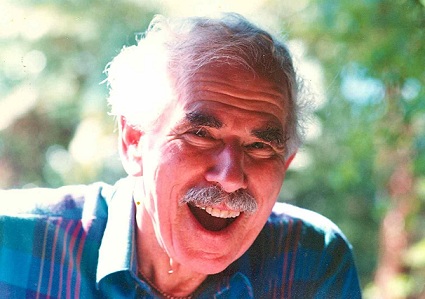 | |
| Anatol Kagan, circa 2005 (source: Kagan family collection, Sydney) |
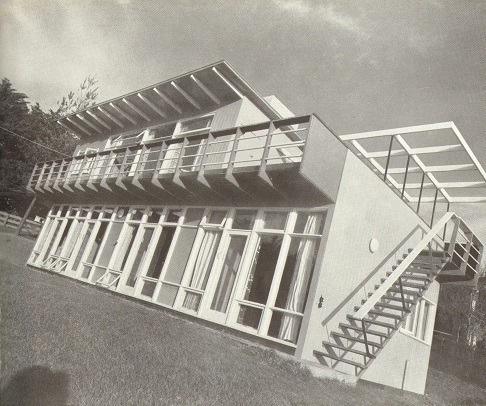 | |
| Holiday house at Mount Eliza by Anatol Kagan (1953) |
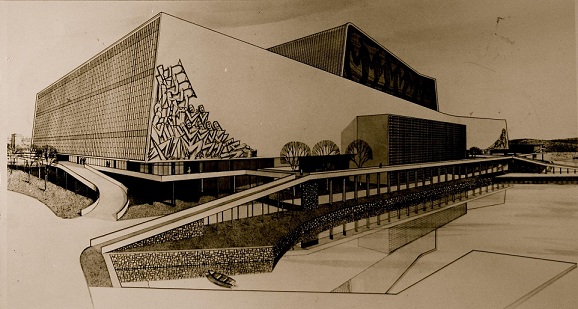 | |
| Sydney Opera House competition entry by Anatol Kagan (source: Kagan family collection, Sydney) |
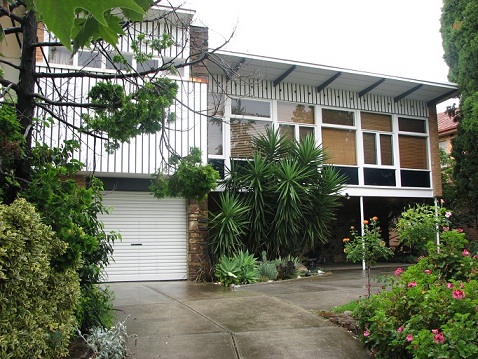 | |
| House at Caulfield by Anatol Kagan (1956) (photograph by Simon Reeves, Built Heritage Pty Ltd) |
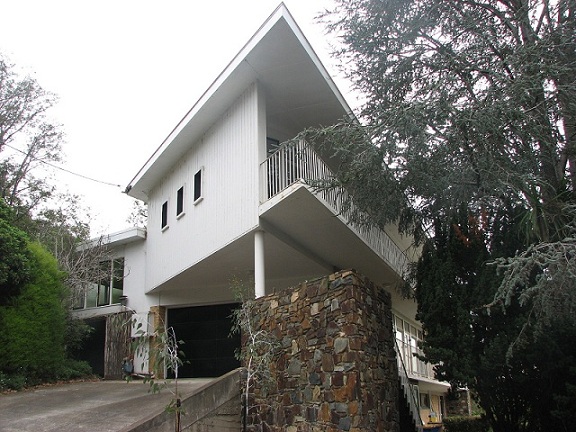 | |
| House at Kew by Anatol Kagan (1957) (photograph by Simon Reeves, Built Heritage Pty Ltd) |
| Acknowledgment is made to the Kagan
family for their generous contribution of information, anecdotes and
illustrative material. |
